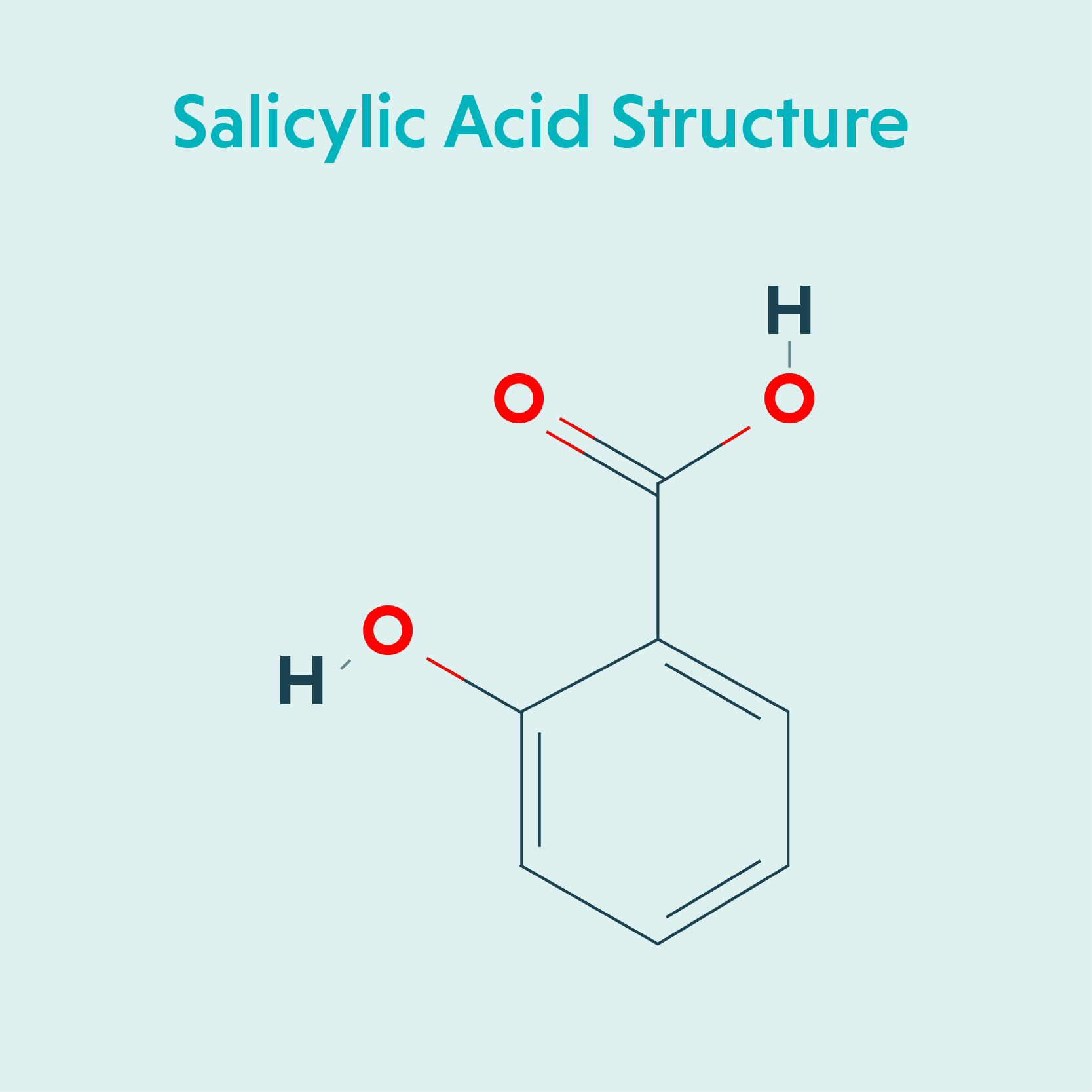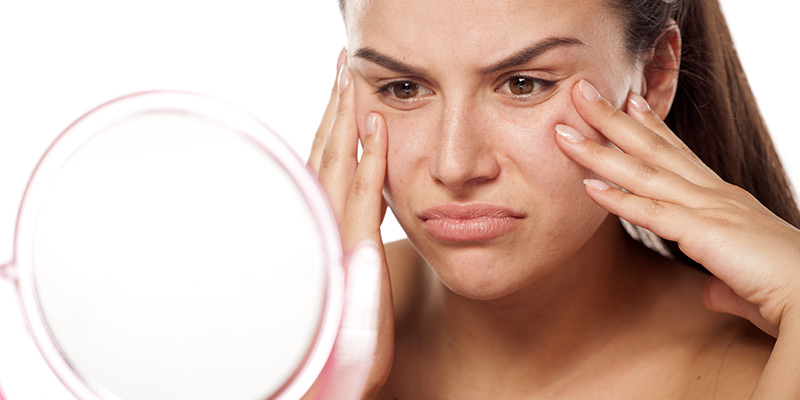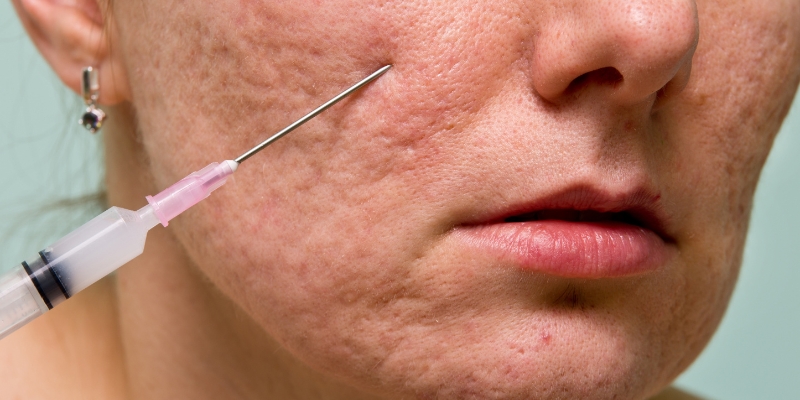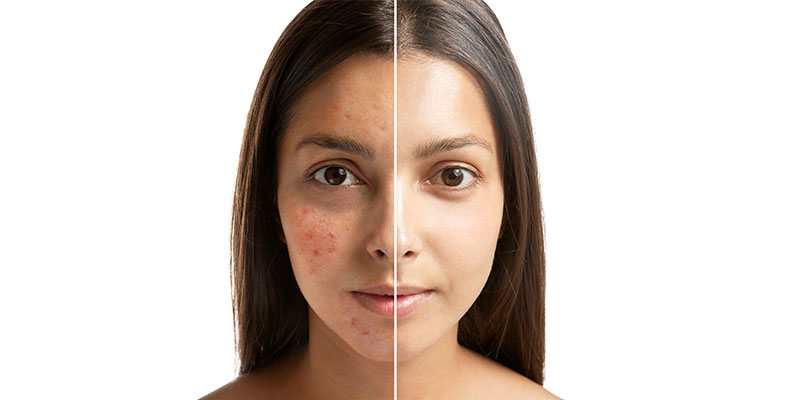Salicylic Acid: Benefits, Uses, and How It Works for Your Skin
Salicylic acid is an exfoliant that dermatologists recommend to boost skin health and enable deep pore cleansing. It is a popular ingredient used in several skin care products, especially those treating acne and pimples. But do you know what makes salicylic acid a staple in many people’s skincare regimens? Let’s find out.
In this article, we will understand why is salicylic acid good for skin and what are the salicylic acid uses and benefits worth exploring. Read on to learn what makes it such a versatile and effective ingredient.
What Is Salicylic Acid? How Does It Work?
Salicylic acid is a drug belonging to the salicylate family. It is a beta hydroxy acid (BHA) commonly used in skincare to treat acne. It works by penetrating deep into pores and helping the skin shed dead cells. Salicylic acid for skin also works as an exfoliant and dissolves debris, opening up clogged pores [1]. Thus, it helps reduce acne, pimples, and associated skin problems.
Salicylic Acid Uses For Skin
There are many salicylic acid uses, especially in treating skin conditions and concerns.
Read on to understand what does salicylic acid do to the skin:
-
Acne:
Salicylic acid helps treat and reduce acne [2]. It breaks the bonds between dead skin cells, easily clearing debris, oil, and sebum from the pores. This unclogging of pores, along with reduced sebum production over time, helps reduce acne breakouts.
-
Comedones:
As salicylic acid penetrates the pores to exfoliate dead skin cells and clear blockages, it helps to treat and prevent blackheads and whiteheads. [3] Its ability to dissolve debris within pores helps maintain clear skin and reduces the formation of new comedones.
-
Seborrheic Dermatitis:
This condition causes flaky, scaly patches on the skin. Salicylic acid helps to reduce these symptoms by exfoliating dead skin cells. It also helps reduce inflammation, thereby reducing itching and redness.
-
Calluses:
Salicylic acid for corns or calluses works by softening and breaking down thickened skin, salicylic acid aids in the removal of calluses. Its keratolytic action makes it easier to exfoliate and smooth out rough skin areas.
-
Open Pores:
As salicylic acid for skin offers exfoliating properties, dermatologists advise using salicylic acid for open pores to tighten them with regular use. Over time, they may become less visible, lending a smoother skin texture.
-
Dark Spots:
Salicylic acid promotes skin cell turnover, helping to fade hyperpigmentation. That is why dermatologists suggest using salicylic acid for dark spots. Over time, you will notice an even-toned, brighter skin tone.
-
Acne Scars:
When you use salicylic acid for skin, it accelerates the shedding of dead skin cells and promotes new cell growth. It also reduces the appearance of acne scars and gradually smoothens the skin texture.
-
Warts:
Salicylic acid breaks down, oftens the thickened wart skin and makes wart removal easy after consistent use.
-
Psoriasis:
Another well-known salicylic acid benefit is its use in the easy management of psoriasis. Salicylic acid helps remove scaly skin and reduces inflammation.
-
Dandruff:
When used in shampoos, salicylic acid helps control flaking and scaling of the scalp. Dermatologists often prescribe salicylic acid for dandruff to help exfoliate dead skin cells from the scalp and reduce associated irritation, relieving the symptoms.
-
Rough, Bumpy Skin:
Salicylic acid smooths and softens rough, bumpy skin by promoting exfoliation. This helps to create a more even texture and improve the overall feel of the skin.
-
Keratosis Pilaris:
Salicylic acid exfoliates the skin, reducing the rough patches and small bumps caused by keratosis pilaris. Regular use can lead to smoother, clearer skin in affected areas.
-
Ingrown Hairs:
Salicylic acid helps prevent and treat ingrown hairs by exfoliating the skin and keeping pores clear. This reduces the likelihood of hairs becoming trapped under the skin.
How To Use Salicylic Acid?
If you are unsure about how to use salicylic acid on the face, here is how to do it.
First clean your face with a gentle cleanser. Then, apply a small amount of a salicylic acid product—like a serum, toner, or spot treatment—on the affected areas.
Follow the product instructions, using once or twice a day. To start with, always use these products in a low concentration (0.5-2%). This will help you understand if it suits your skin. Follow up with a moisturiser to prevent dryness.
NOTE:
Always take your dermatologist’s advice before using salicylic acid for face. It may increase sun sensitivity, so always use sunscreen. If you experience irritation, reduce usage and consult your doctor immediately.
Salicylic Acid Benefits For Skin:
Here are some of the most common salicylic acid benefits for skin:
Reduces Inflammation & Redness:
Salicylic acid has anti-inflammatory properties that help soothe and calm irritated skin. This makes it an excellent option for calming inflamed skin conditions like acne and rosacea.
Exfoliates The Skin:
As a beta hydroxy acid (BHA), salicylic acid helps remove dead skin cells [4], promoting a smoother, more radiant complexion and preventing the clogging of pores. This further prevents the formation of blackheads and whiteheads.
Reduces Blemishes:
Regular use of salicylic acid can significantly reduce the appearance of pimples and blemishes, giving you clear, healthy skin.
Controls Excess Oil Production:
Salicylic acid regulates sebum production, which is crucial for managing oily skin. Reducing excess oil helps prevent acne breakouts.
Astringent Effect:
Salicylic acid acts as an astringent, tightening the pores and helping to remove excess oil from the skin. This results in a cleaner, more refined skin appearance.
Improves Skin Texture and Tone:
Salicylic acid enhances skin texture and tone by encouraging the old, dull skin cells to shed off. It also boosts the growth of new, healthy ones. It helps to even out skin tone and smooth rough patches, resulting in a more uniform complexion.
Who Can Use Salicylic Acid?
People with oily skin, acne-prone skin, those prone to blackheads and whiteheads, with rough skin texture, and people with enlarged pores can include salicylic acid in their skincare routine and enjoy great benefits.
Who Should Avoid Using Salicylic Acid?
People with sensitive skin, individuals with eczema or rosacea, pregnant and breastfeeding women, people allergic to aspirin and individuals with diabetes or blood circulation issues.
Salicylic Acid Side Effects
Along with the salicylic acid uses for skin, it also gives certain side effects.
Common side effects of topical salicylic acid include skin irritation and a stinging sensation on the skin. Visit your dermatologist when you notice this as they will likely change the product or recommend changes in usage.
Less common salicylic acid side effects given below, it is best to consult your dermatologist as soon as possible [5].
-
Dizziness
-
Nausea
-
Hearing loss
-
Extreme tiredness or weakness
-
Vomiting
-
Ringing or buzzing in the ears
-
Headache
-
Fast breathing
-
Confusion
-
Diarrhoea
Rare salicylic acid side effects include:
-
Itching
-
Throat tightness
-
Swelling of the eyes, face, lips, or tongue
-
Hives
-
Difficulty breathing
-
Feeling faint
When Should I Visit A Dermatologist?
Although salicylic acid is a safe medication, sometimes, under certain circumstances, salicylic acid may cause extreme side effects. These could be due to allergies, reactions with other ongoing medications, incorrect usage, or an overdose. If you notice any of the above-mentioned salicylic acid side effects, you must immediately inform your dermatologist and schedule a visit.
Some common symptoms of salicylic acid overdose requiring an emergency visit to the nearest doctor include:
- Rapid breathing
- Severe or continuing headache
- Confusion
- Severe drowsiness
- Continuing ringing or buzzing in the ears
- Diarrhoea
- Severe stomach pain
- Continuing nausea
- Dizziness
- Light-headedness
- Vomiting
- Hearing loss
Frequently Asked Questions On Salicylic Acid
Q1. What Is Salicylic Acid Commonly Used For?
A1. Salicylic acid is commonly used to treat acne and other skin conditions, such as psoriasis and dandruff, due to its exfoliating and anti-inflammatory properties.
Q2. Does Salicylic Acid Give Glowing Skin?
A2. Salicylic acid can improve skin texture and boost skin health, making it more radiant and glowing.
Q3. Does Salicylic Acid Remove Tan?
A3. Salicylic acid primarily exfoliates the skin and can help fade tan lines or uneven pigmentation by promoting cell turnover.
Q4. Can Too Much Salicylic Acid Damage Skin?
A4. Excessive use of salicylic acid can lead to dryness and irritation, damaging the protective barrier of the skin. It is best to follow your dermatologist’s instructions.
Q5. Does Salicylic Acid Darken Skin?
A5. Salicylic acid does not darken the skin. It can help improve skin tone by exfoliating and removing dead skin cells that can make the skin appear dull.
Q6. How Much Time Does Salicylic Acid Take To Work?
A6. Salicylic acid typically starts to show results within a few weeks of consistent use, though individual results may vary depending on the specific skin concern being treated.
Q7. Does Salicylic Acid Work For Keratosis Pilaris?
A7. Yes, salicylic acid is effective in treating keratosis pilaris. It helps exfoliate the skin and reduces the build-up of keratin around hair follicles.
Q8. Do Salicylic Acid And Azelaic Acid work together?
A8. Salicylic acid and azelaic acid can be used together in skincare routines, as they have complementary benefits for treating acne and improving skin texture.
Q9. How Does Salicylic Acid Work For Strawberry Legs?
A9. Salicylic acid can help with “strawberry legs” by exfoliating the skin and unclogging the pores, reducing the appearance of dark spots and bumps caused by ingrown hairs or folliculitis.
Q10. What Is The Difference Between Kojic Acid And Salicylic Acid?
A10. Kojic acid is primarily used for skin lightening and treating hyperpigmentation, while salicylic acid helps in exfoliation, acne treatment, and improving skin texture.
Q11. What Is The Difference Between Salicylic Acid And Hyaluronic Acid?
A11. Salicylic acid exfoliates and treats acne, while hyaluronic acid hydrates and makes the skin plump by attracting moisture.
Q12. Does Salicylic Acid Help With Hyperpigmentation?
A12. Yes, salicylic acid can help with hyperpigmentation. It exfoliates the skin and promotes the turnover of darkened skin cells, resulting in a more even skin tone over time.
Q13. Can Salicylic Acid Cause Breakouts?
A13. In some cases, salicylic acid can initially cause purging as it accelerates skin cell turnover, which may bring underlying breakouts to the surface before improving skin condition.
Q14. Does Salicylic Acid Cause Skin Peeling?
A14. Salicylic acid is a chemical exfoliant that can peel away dead skin cells, but it is not typically used as a standalone peel treatment. Higher concentrations and professional application may be required for peeling treatments.
Q15. Does Salicylic Acid Reduce Redness?
A15. Salicylic acid’s anti-inflammatory properties can help reduce redness and skin irritation associated with acne by calming and soothing the skin.
Q16. Does Salicylic Acid Dry Out Skin?
A16. Salicylic acid can dry out the skin if you over use it or don’t follow it up with proper moisturising.
Q17. Can Salicylic Acid And Hyaluronic Acid be used together?
A17. Yes, salicylic acid and hyaluronic acid can be used together in a skincare routine. Salicylic acid exfoliates and treats acne, while hyaluronic acid hydrates and plumps the skin.
Q18. Is Salicylic Acid Good For Dry Skin?
A18. Salicylic acid has a drying effect on the skin. Hence, it is generally recommended for oily and acne-prone skin. Those with dry skin should use it cautiously and ensure adequate moisturisation.
Q19. Does Salicylic Acid Cause Purging?
A19. Salicylic acid can cause purging when it accelerates skin cell turnover, bringing underlying congestion to the surface. It is temporary and indicates that the product is working.
Q20. How Long Does It Take For Salicylic Acid To Work?
A20. Salicylic acid typically starts to show results within a few weeks of consistent use, but it may take longer for stubborn acne.
Q21. Does Salicylic Acid Work For Closed Comedones?
A21. Yes, salicylic acid can effectively treat closed comedones (whiteheads) by exfoliating the skin. It also prevents dead skin build-up or oil within pores.
Q22. Is Salicylic Acid Good For Sensitive Skin?
A22. Salicylic acid can be harsh for sensitive skin due to its exfoliating nature. Individuals with sensitive skin can exert caution and consider lower concentrations or alternatives.
Takeaway
Salicylic acid is an effective BHA used to enhance skin health. It is beneficial for oily skin, as it helps unclog pores, reduces sebum production and clears out skin debris. It can be a great addition to your skin care regimen. We recommend that you consult a dermatologist and include it in your routine to enjoy the benefits it offers.









